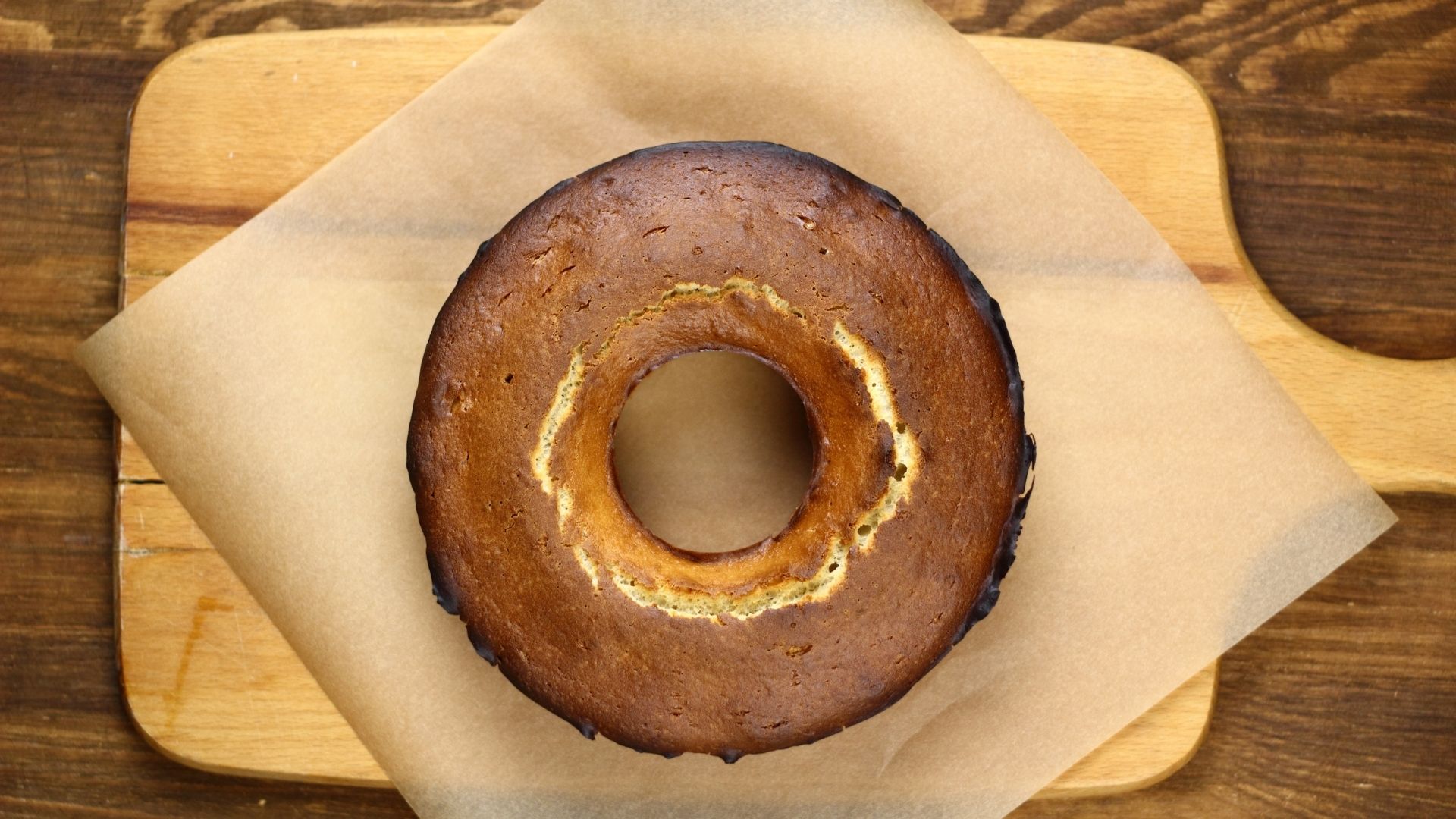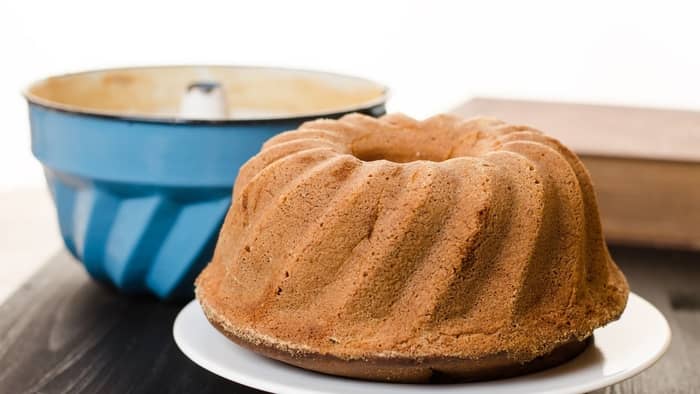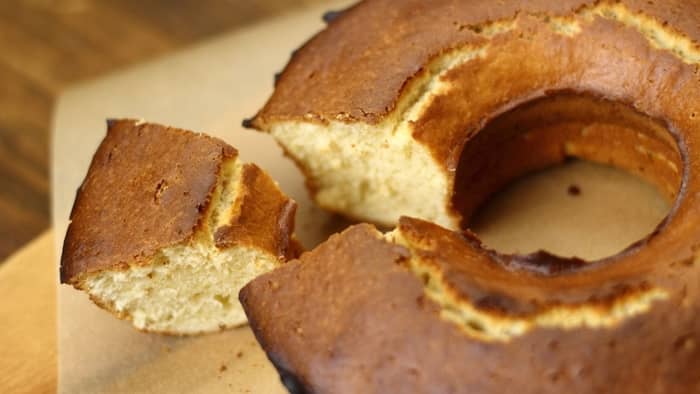Last Updated on December 8, 2021
Effectively cooling a cake is extremely important and will affect the final outcome. Today, we will discuss exactly how to cool a bundt cake.
We have compiled the best methods for cooling bundt cake which will ensure yours don’t fall apart when you are trying to remove it from the pan, or that your frosting doesn’t melt off or separate when you are trying to decorate.
What Is Bundt Cake?
Many people aren’t that familiar with exactly what makes a bundt cake a bundt cake. Obviously, the first thing that makes a bundt cake unique is the shape that the cake batter is baked in. Traditional bundt cake pans are round with a hole in the middle (like a ring). The pan also has grooved edges to give the entire cake a beautiful form.
There are naturally many different shapes and sizes of bundt cake pans and some even have beautiful and intricate patterns on the side.
Because of this pan’s very unique shape, the cake batter itself has to adhere to certain characteristics. First and arguably most importantly, the recipe needs to make a moist cake. This is because the overall surface of the cake will be exposed to much higher temperatures compared to recipes that bake in normal pans. The moisture will help prevent the cake from drying out.
Then, usually, the cake recipe used are ones with dense textures and a tiny crumb. You can have a look at some of our favorite bundt cake recipes to get a better idea of how they look and the recipes used.
Read more about this incredibly Strawberry Bundt Cake From Scratch.
Why It Is Important To Cool Bundt Cake Correctly
There are a couple of reasons why it is crucial to cool bundt cake completely before continuing with any step!
Hotcake is fragile
After spending hours making the cake, do you really want it falling apart as you are trying to remove it from the pan or when you are decorating it? When working with hot cake, the ingredients and bonds between them are very “stretched out”. As the cake cools, the bonds contract and create a more stable cake.
Cooled cakes are easier to remove from the pan
By even cooling a bundt cake for a few minutes inside the pan, you will already find that it is much easier to remove from the pan. Especially when the cake has accidentally burnt!
It is easier to decorate
Cooling a bundt cake before decorating it will allow you to use temperature-sensitive ingredients. This includes most frostings like buttercream frosting, meringue-based frostings, glazes, and even jelly-based coatings.
If you add any of these on top of a hot bundt cake, they will most likely melt and not sit beautifully on the top as they should. You also run the risk of having some of these frostings split. This happens when the frostings bonds (the bonds between fat and liquid that hold the frosting together) denatures when exposed to heat and separate. It doesn’t look appealing and neither is its texture!
How To Cool A Bundt Cake?
Here, there are also a few different methods you can use to help cool your bundt cake.
Cool it at room temperature
This is the easiest method you can use. All that you have to do is place the bundt cake (still inside its pan) on a cooling rack. Leave the cake until it has completely cooled. Once the entire pan and cake have cooled down, you can gently remove the cake from the pan by inverting it over a plate or another cooling rack.
Remove it from the bundt pan
You can also only leave it for about 10 minutes or until the pan has cooled down. Then, you can place a wire rack over the open side of the pan and flip it over releasing the cake from its tin. Once removed from the pan, the bundt cake will cool much quicker compared to inside the pan.
Place the bundt cake inside the fridge or freezer
Once the cake has been fully baked, remove it from the oven and allow it to cool at room temperature inside of its baking pan. You can leave it there for between 10 to 20 minutes depending on its size. Then, remove it from the pan by inverting it onto a wire rack.
Place the wire rack inside the fridge or inside the freezer. The cold circulating air will help your cake cool much quicker compared to at room temperature. But, be careful not to leave it inside for too long! Fridges can and does dry out the cake!
Cut the cake into smaller pieces
This is a very common rule in the kitchen when it comes to cooling food and baked goods. The larger the surface area is, the more of it is exposed to air which ultimately means that it cools much quicker.
Now, we know that cutting a bundt cake seems strange considering you want to beautiful design, but, if you are in a hurry or don’t mind pre-portioned pieces, it is an excellent option.
you can either slice the cake horizontally or divide it into 8 to 12 portions. This will be almost half the cooling time needed for the cake.
How Long To Cool Bundt Cake?
Asking how long to cool bundt cake is like asking how long a piece of string should be. It depends entirely on the size of your cake, the temperatures used to cool it at, and even other methods you are using to speed up the process.
Smaller bundt cakes will take less time to completely cool compared to massive ones. On average, a 10-inch bundt cake will take about 2-3 hours to completely cool at room temperature. If you are cooling it inside the fridge or freezer, it will reduce the time by at least an hour.
In Conclusion
How to cool a bundt cake has never been easier. By following the many different methods we have set out today, you can prevent having your cake fall apart or your frosting from melting. You will have a perfectly baked and decorated cake that everyone will be in awe of!
Remember to let us know what you thought of this tutorial in the comments below and share this post with anyone struggling to get the perfect bundt cake!
Read more about How to Easily Frost Your Bundt Cake.

Lindy Van Schalkwyk is a culinary specialist with a background in Advanced Cooking, Advanced Pâtisserie, Media Communications and Nutrition. She has gained invaluable experience in the culinary industry having worked in some of the top restaurants in Africa in 2016 and 2017. Her expertise in nutrition has enabled her to develop recipes for special dietary needs. In 2018, Lindy began working in the Food Media industry, focusing on recipe development, recipe writing, food writing and food styling.



